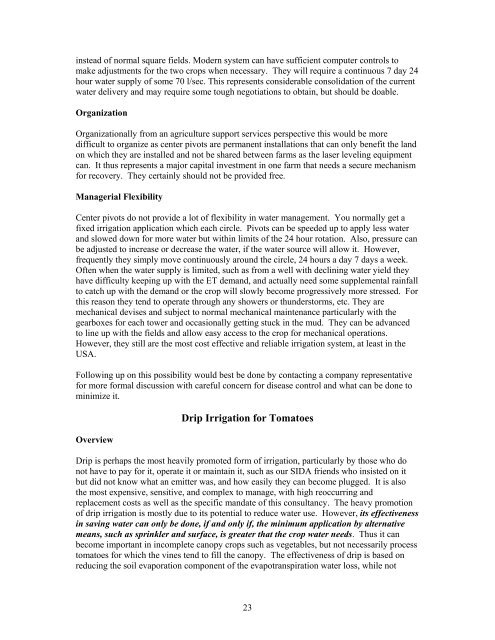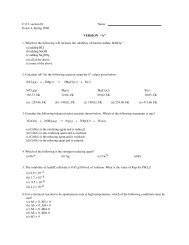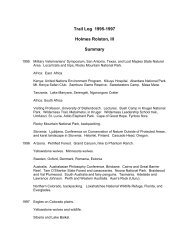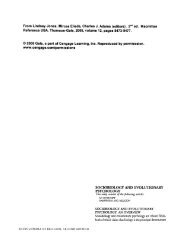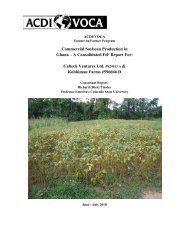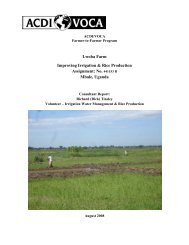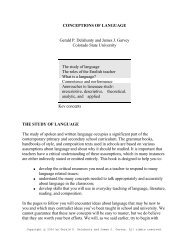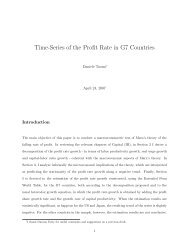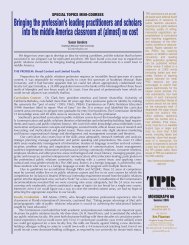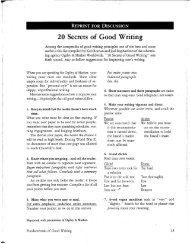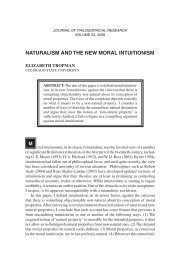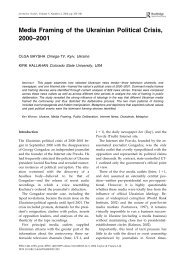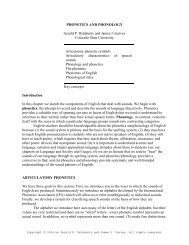Geha Foods Evaluation of Irrigation for Processed Tomatoes
Geha Foods Evaluation of Irrigation for Processed Tomatoes
Geha Foods Evaluation of Irrigation for Processed Tomatoes
Create successful ePaper yourself
Turn your PDF publications into a flip-book with our unique Google optimized e-Paper software.
instead <strong>of</strong> normal square fields. Modern system can have sufficient computer controls to<br />
make adjustments <strong>for</strong> the two crops when necessary. They will require a continuous 7 day 24<br />
hour water supply <strong>of</strong> some 70 l/sec. This represents considerable consolidation <strong>of</strong> the current<br />
water delivery and may require some tough negotiations to obtain, but should be doable.<br />
Organization<br />
Organizationally from an agriculture support services perspective this would be more<br />
difficult to organize as center pivots are permanent installations that can only benefit the land<br />
on which they are installed and not be shared between farms as the laser leveling equipment<br />
can. It thus represents a major capital investment in one farm that needs a secure mechanism<br />
<strong>for</strong> recovery. They certainly should not be provided free.<br />
Managerial Flexibility<br />
Center pivots do not provide a lot <strong>of</strong> flexibility in water management. You normally get a<br />
fixed irrigation application which each circle. Pivots can be speeded up to apply less water<br />
and slowed down <strong>for</strong> more water but within limits <strong>of</strong> the 24 hour rotation. Also, pressure can<br />
be adjusted to increase or decrease the water, if the water source will allow it. However,<br />
frequently they simply move continuously around the circle, 24 hours a day 7 days a week.<br />
Often when the water supply is limited, such as from a well with declining water yield they<br />
have difficulty keeping up with the ET demand, and actually need some supplemental rainfall<br />
to catch up with the demand or the crop will slowly become progressively more stressed. For<br />
this reason they tend to operate through any showers or thunderstorms, etc. They are<br />
mechanical devises and subject to normal mechanical maintenance particularly with the<br />
gearboxes <strong>for</strong> each tower and occasionally getting stuck in the mud. They can be advanced<br />
to line up with the fields and allow easy access to the crop <strong>for</strong> mechanical operations.<br />
However, they still are the most cost effective and reliable irrigation system, at least in the<br />
USA.<br />
Following up on this possibility would best be done by contacting a company representative<br />
<strong>for</strong> more <strong>for</strong>mal discussion with careful concern <strong>for</strong> disease control and what can be done to<br />
minimize it.<br />
Overview<br />
Drip <strong>Irrigation</strong> <strong>for</strong> <strong>Tomatoes</strong><br />
Drip is perhaps the most heavily promoted <strong>for</strong>m <strong>of</strong> irrigation, particularly by those who do<br />
not have to pay <strong>for</strong> it, operate it or maintain it, such as our SIDA friends who insisted on it<br />
but did not know what an emitter was, and how easily they can become plugged. It is also<br />
the most expensive, sensitive, and complex to manage, with high reoccurring and<br />
replacement costs as well as the specific mandate <strong>of</strong> this consultancy. The heavy promotion<br />
<strong>of</strong> drip irrigation is mostly due to its potential to reduce water use. However, its effectiveness<br />
in saving water can only be done, if and only if, the minimum application by alternative<br />
means, such as sprinkler and surface, is greater that the crop water needs. Thus it can<br />
become important in incomplete canopy crops such as vegetables, but not necessarily process<br />
tomatoes <strong>for</strong> which the vines tend to fill the canopy. The effectiveness <strong>of</strong> drip is based on<br />
reducing the soil evaporation component <strong>of</strong> the evapotranspiration water loss, while not<br />
23


